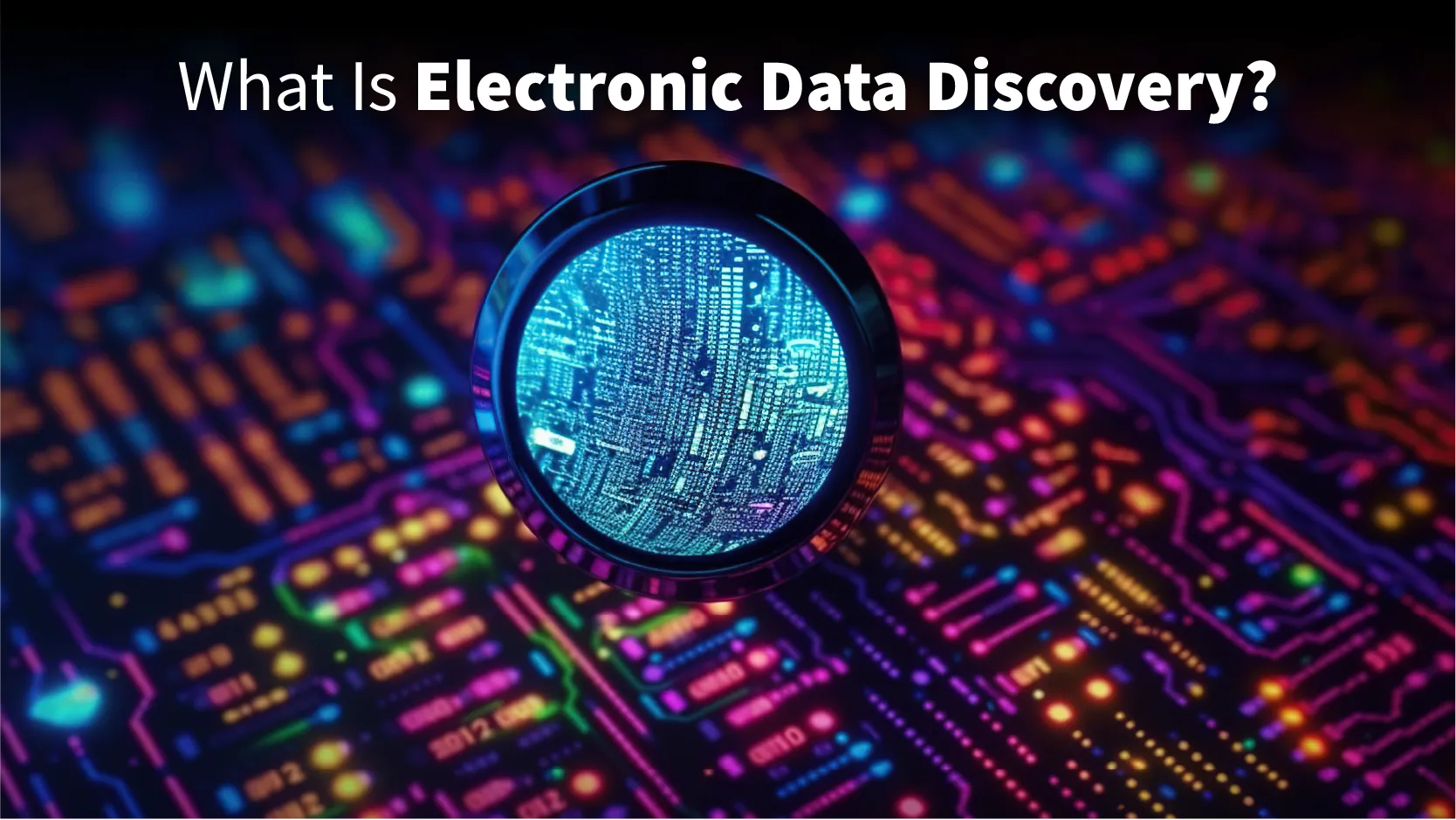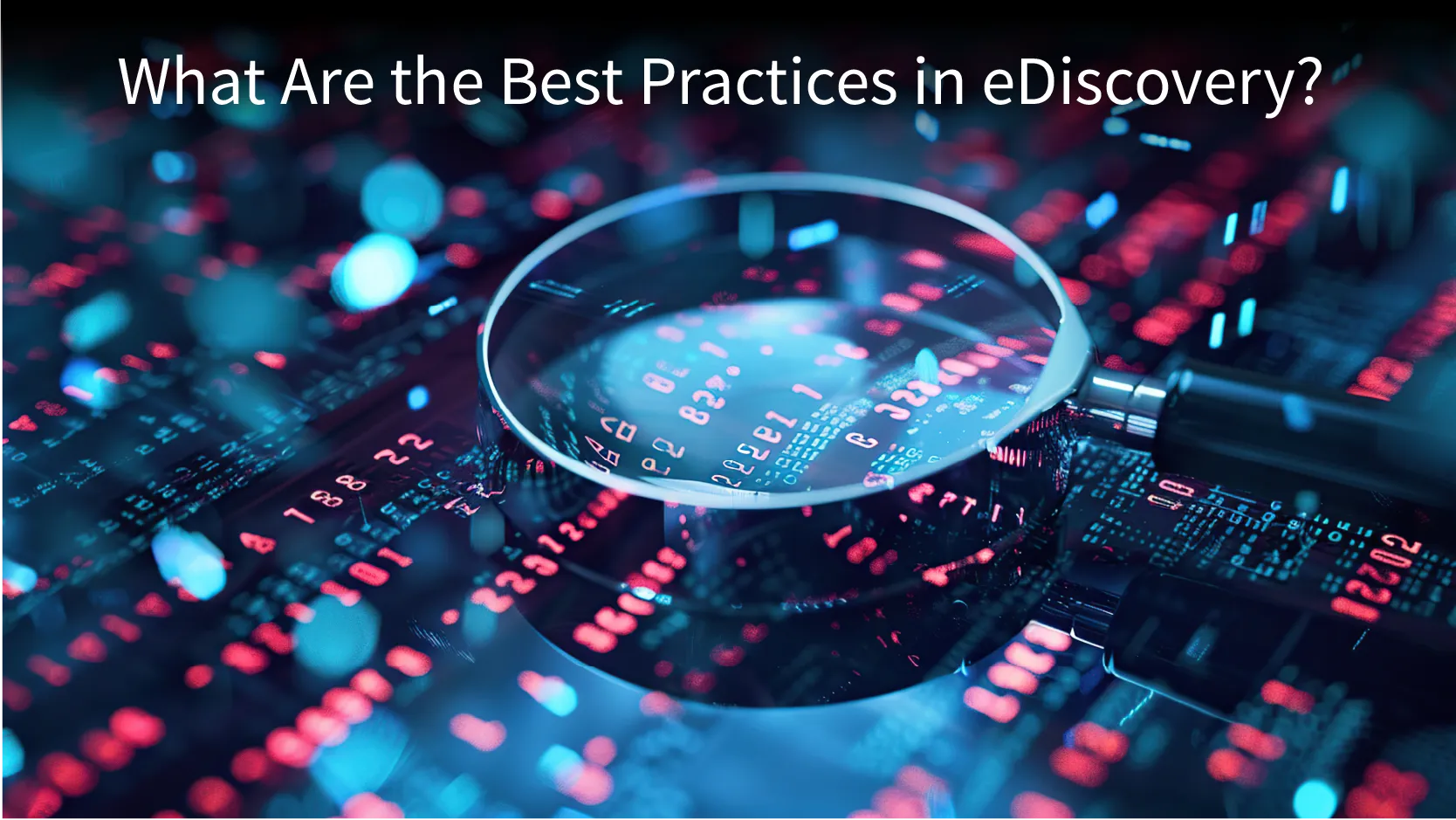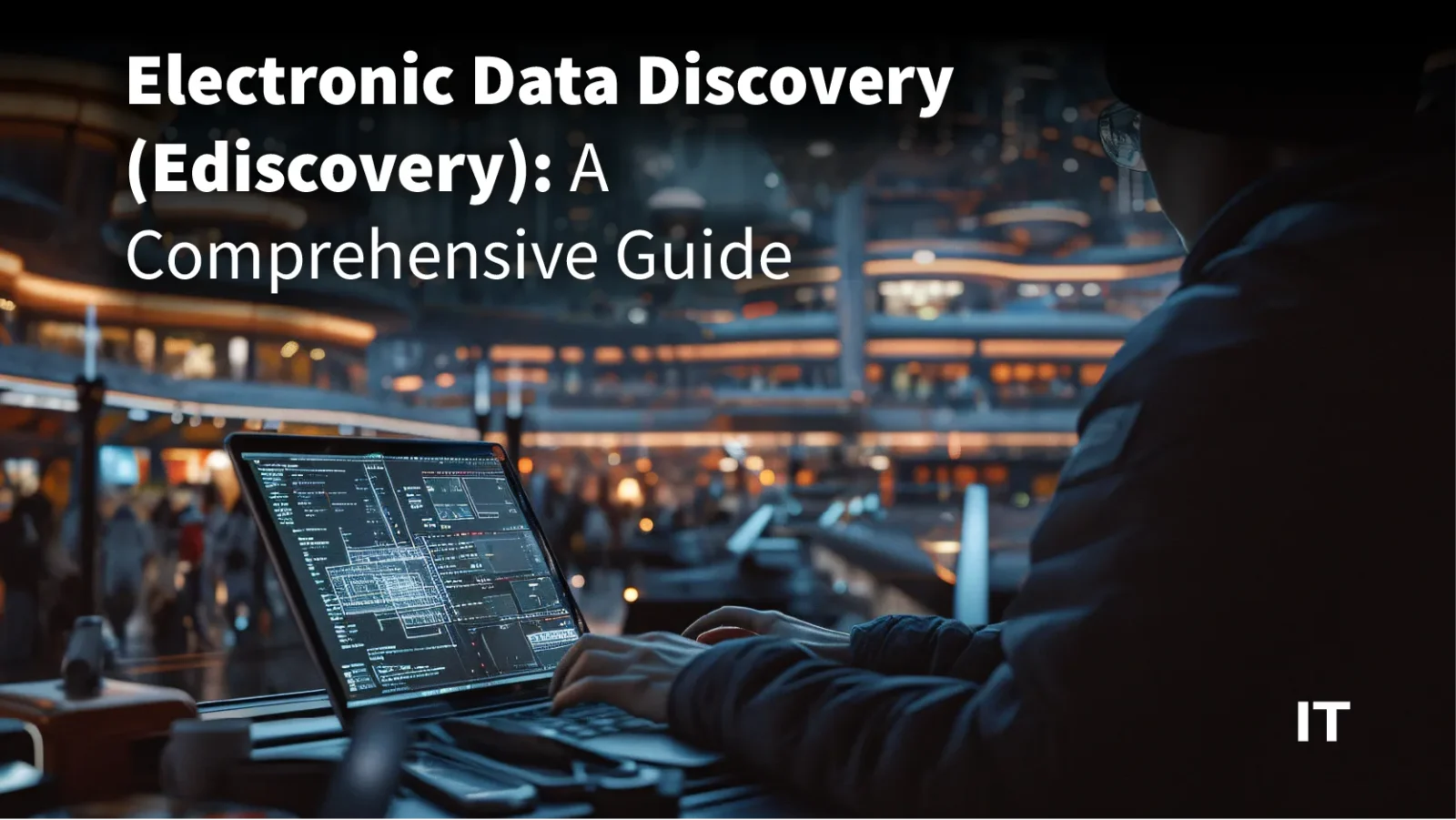Electronic data discovery or ediscovery is exactly as how it sounds. This means it involves finding information that is stored electronically. This is often done in the case of an investigation or a legal case that requires digging for information.
Why is it needed? In today’s digital age, where we’re constantly creating and storing electronic information, it’s become super important to efficiently handle and find relevant data for legal proceedings. Whether it’s corporate lawsuits or regulatory investigations, organizations and legal experts are faced with the tough task of sifting through loads of electronic data to find that one crucial piece of evidence. It’s like finding a needle in a haystack! With that, let’s understand more about it.
What Is Electronic Data Discovery?
 The process of locating, gathering, and providing electronically stored information (ESI) in response to a judicial procedure or investigation is called e-discovery, or electronic data discovery. Information in electronic formats, including voicemail, papers, databases, audio and video files, social media, and webpages, can be found through this process. E-discovery in court is controlled by established procedures and civil procedural laws.
The process of locating, gathering, and providing electronically stored information (ESI) in response to a judicial procedure or investigation is called e-discovery, or electronic data discovery. Information in electronic formats, including voicemail, papers, databases, audio and video files, social media, and webpages, can be found through this process. E-discovery in court is controlled by established procedures and civil procedural laws.
What Is An Example Of Ediscovery?
Finding and gathering electronically stored information (ESI) that can be important to a legal case is an example of e-discovery. This can comprise a variety of electronic data formats, including emails, documents, databases, chat messages on instant messaging apps, posts on social media, and webpages. Legal professionals can locate important evidence and make defensible choices by effectively searching, processing, and reviewing this electronic material with the use of e-discovery software and tools.
For example, e-discovery technologies expedited the review process by enabling the legal team in a class-action lawsuit against a global firm to quickly classify and prioritize millions of documents using predictive coding. The significance of e-discovery in organizing and evaluating electronic data for legal processes is demonstrated by these instances.
Also Read: What is Cloud Analytics? Types, Benefits, Working
What Are the Best Practices in eDiscovery?
 Here are some important things to keep in mind when it comes to eDiscovery best practices:
Here are some important things to keep in mind when it comes to eDiscovery best practices:
- Get Your Processes and Workflows Sorted: It’s crucial to establish clear processes and workflows for your eDiscovery operations. Make sure everyone on the team knows their roles and responsibilities. This means setting up protocols for collecting, preserving, processing, reviewing, and producing data.
- Know about Legal Requirements: Stay up-to-date with the laws, regulations, and rules that govern eDiscovery in your area. Take the time to review and understand the relevant rules of civil procedure. And don’t forget to keep an eye out for any updates or amendments to ensure you comply.
- Embrace Information Governance: Implement strong information governance policies and practices to effectively manage electronically stored information (ESI) throughout its lifecycle. This includes properly classifying, retaining, and disposing of data to minimize the amount subject to electronic data discovery.
- Leverage Technology and Tools: Make the most of eDiscovery software and technology solutions to streamline and automate different stages of the process. These tools can be a huge help with data collection, processing, review, and production, making everything more efficient and accurate.
- Start with Early Case Assessment: Before diving in, take the time to perform an early case assessment. This will help you understand the case and the ESI involved. It’s a smart move that will allow you to develop a focused and cost-effective eDiscovery strategy, identify key custodians, and assess any potential risks or challenges.
- Keep an Eye on Quality Control: Make sure you have quality control measures in place throughout the eDiscovery process. This is to ensure accuracy, consistency, and defensibility. Regularly check the quality, validate your search terms, and use sampling techniques to verify the data’s integrity.
Challenges in eDiscovery
Dealing with electronic data discovery can be quite a task, and some common challenges often come up. Let’s take a look at them:
- Volume and Complexity of Data: With the explosion of electronically stored information (ESI), it’s no surprise that managing the sheer amount of data can be overwhelming. We’re talking about emails, documents, social media posts, and more. It can be a real challenge to efficiently identify and review the relevant information.
- Data Preservation and Collection: When it comes to preserving and collecting data, maintaining its integrity is crucial. This can get tricky when you’re dealing with different sources of data, multiple people involved, and making sure that everything is collected in a way that holds up in court.
- Data Privacy and Security: Protecting sensitive and confidential information during the eDiscovery process is of utmost importance. We need to comply with data privacy regulations and make sure we have robust information security measures in place to prevent unauthorized access or breaches.
- International and Cross-Border eDiscovery: Conducting electronic data discovery across different jurisdictions can be a whole different ballgame. Each country has its own laws, regulations, and even language and cultural differences. It can complicate the data collection, review, and production processes.
- Technology and Tools: Keeping up with the ever-evolving eDiscovery technologies and tools can be a bit of a challenge. There’s a lot to consider, from choosing the right software to managing data formats and ensuring compatibility across different systems.
- Cost and Resource Management: Let’s not forget about the financial aspect. eDiscovery can get quite expensive, especially when you’re dealing with large volumes of data and complex legal matters. It’s important to effectively manage budgets, allocate resources, and control costs while still maintaining quality and defensibility.
These are the common challenges that often pop up in the world of electronic data discovery. It’s no walk in the park, but with the right approach and tools, you can navigate through them successfully.
Conclusively
In the current digital era, electronic data discovery is a dynamic and ever-evolving procedure that offers both benefits and obstacles. The issues that enterprises and legal professionals face include the volume and complexity of electronically stored information, privacy and security concerns about data, international considerations, and the need to keep up with evolving technologies. However, these difficulties can be successfully overcome by putting best practices into practice, being current with regulatory requirements, utilizing technology, and encouraging cooperation. Organizations that effectively handle these obstacles as eDiscovery develops will be better able to find pertinent evidence, make wise decisions, and win cases in court.

































